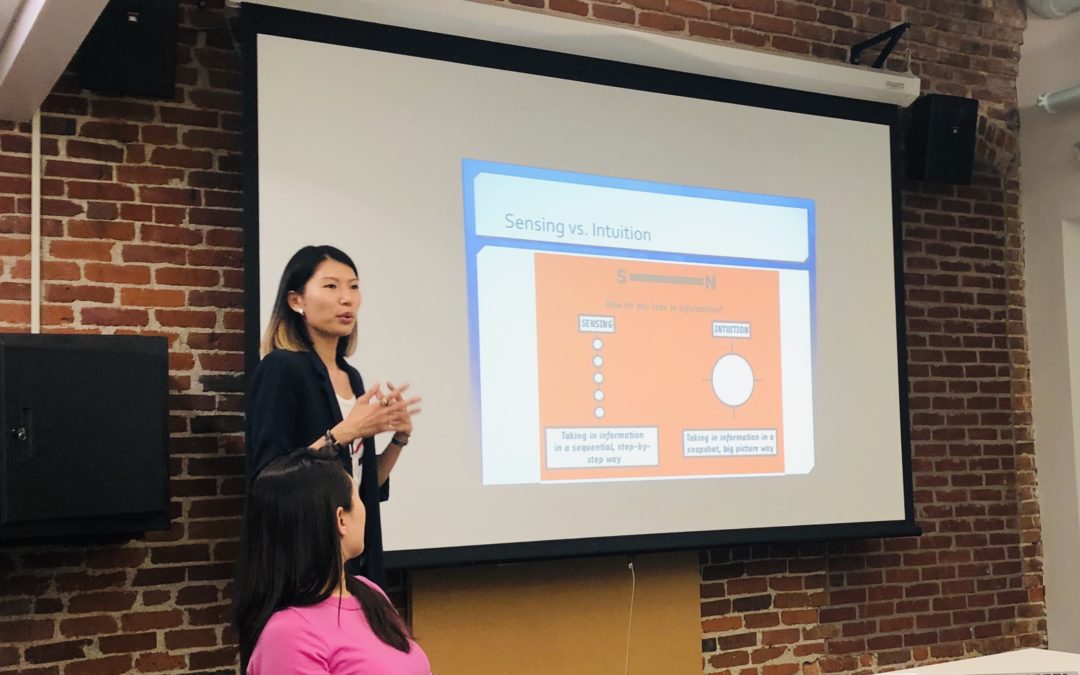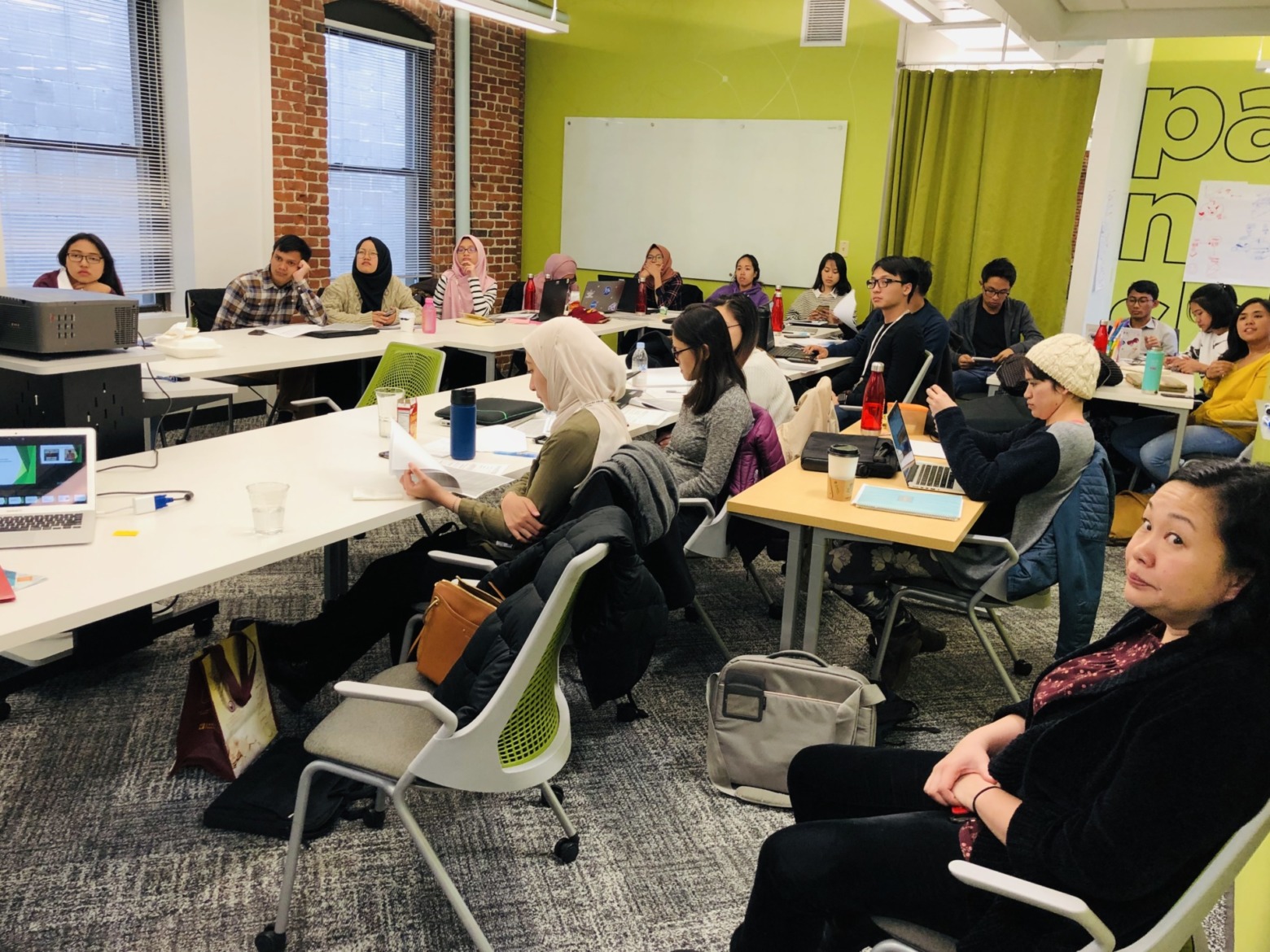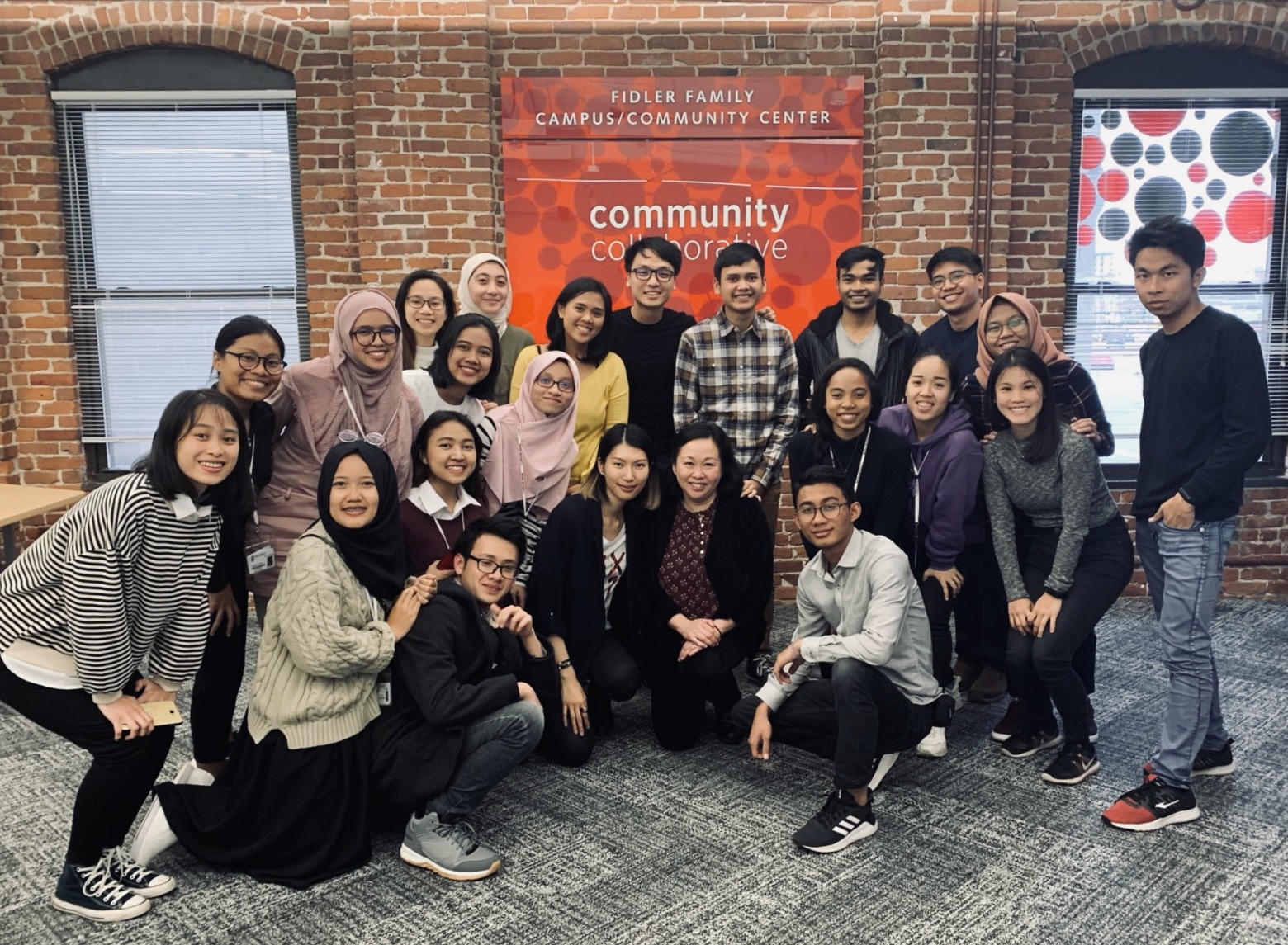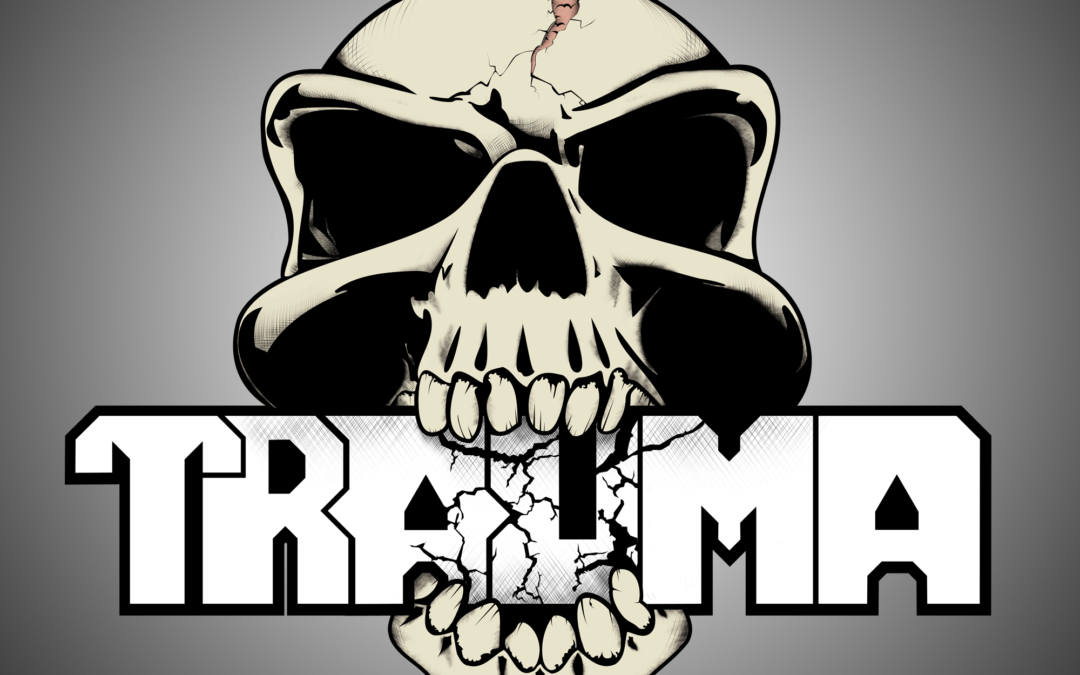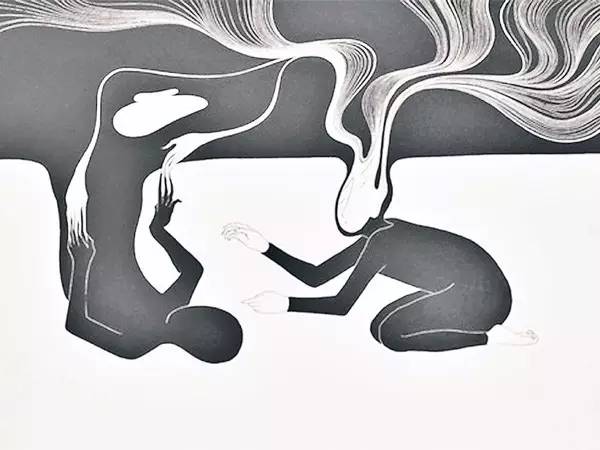
by yumintanlive | Aug 28, 2019 | Psychology & Mental Health, Public Speaking and Workshops
Recently it has been my honor to be one of the speakers at the promotion of the Young Southeast Asian Leaders Initiative (YSEALI) project that is jointly hosted by the state government and Brown University.
As part of the project, I hosted a workshop relating to leadership ability and style. The workshop mainly used the Myers-Briggs Type Indicator (MBTI) to test and assess these young leaders’ leadership ability and styles. MBTI is a character assessment theory that was developed based on a Swiss psychiatrist, Jung’s theory of psychological types. Approximately 3.5 million people participate in the MBTI assessment annually. 80% of the top 500 financial corporations in the world utilize the MBTI assessment for important decisions such as recruitment, the pairing of staff and roles, establishment of teams and departments etc. MBTI can also be used for career planning, social network development and interaction, marriage education, improvement of learning and workplace efficiency etc.
MBTI indicates a personality trend, there is no right or wrong answer because every person has different habits. MBTI suggests that every person would express his personal behavior, skills and attitude based on his own personality type, and every MBTI personality type has its potential as well as shortcomings.

MBTI assesses and describes a person’s personality trend in receiving messages, making decisions and perceiving life in four dimensions. These four dimensions are:
How we get energized:Extraversion (E) – Introversion (I)
How we take in information: Sensing (S) – Intuition (N)
How we make decisions:Thinking (T) – Feeling (F)
How fast we make decisions:Judging (J) – Perceiving (P)

None of these personality results are better or worse, our society needs different types of talents. The important point is to understand one’s direction of development and make a wise career plan, improve learning and workplace efficiency and improve interaction with others. Similarly, a corporation can only design the appropriate encouragement mechanism, establish the ideal team to fulfill its needs and improve interaction between different departments if it has a full understanding of its staff.

by yumintanlive | Aug 28, 2019 | Psychology & Mental Health
What Is Trauma?
Bessel van der Kolk, a US psychiatrist, defines trauma as an experience or disaster that leaves people in a state of helplessness and terror, thereby losing the ability to deal with the problems, threats and disasters in everyday life. Traumatic incidents can cause profound and lasting changes in our physiology, emotions, cognition and memory, as well as cutting off the connections between these four components.
Trauma can be classified as one-off trauma or continuous and repetitive trauma. One-off traumas include serious accidents (car accidents, robbery etc.), natural or man-made disasters (earthquakes, tsunamis etc.), terrorist attacks etc. Continuous and repetitive traumas include long-term sexual abuse, physical abuse (physical violence), emotional abuse (verbal abuse and control), serious illnesses, wars etc. Both one-off traumas as well as continuous and repetitive traumas can cause serious psychological and physical harm for the survivors and witnesses of traumatic incidents.

What Is Post-Traumatic Stress Disorder (PTSD)?
Not all traumatic experiences will lead to trauma response or trauma-related illness or diagnoses.
After a trauma, people will become nervous, anxious and will even have nightmares. These are all normal reactions to traumatic incidents. Once they spend some time recovering and adjusting with the help from family and friends, the majority of people will be able to get on with their lives again. However, a small portion of people will develop psychological illnesses relating to the trauma and the most commonly seen illness is called post-traumatic stress disorder (PTSD).
The US Diagnostic and Statistical Manual of Mental Disorder (DSM-5) noted that the symptoms of PTSD include: (1) nightmares and intrusive memories where sufferers will experience flashbacks of the traumatic incident again (2) avoiding people, incidents, objects, places and scenes that are related to the traumatic incident (3) pessimistic thoughts and feelings eg. not trusting people around them, not showing interest in things that happen around them, blaming themselves etc. (4) excessive arousal and reactivity eg. being impatient, aggressive, impulsive, overly alert, finding it difficult to focus etc. Sufferers can only be diagnosed as having PTSD if such symptoms persist for at least one month.

How Trauma Can Cause A “Short Circuit” In Our Brain
According to Joseph LeDoux, a neurologist who conducted research on how our brain processes emotions, our brain has two systems which process our emotions, namely high road and low road. These emotion-processing systems are especially important to our ability to survive.
As an external danger signal enters our brain, it will enter the low road first. The low road has a tissue called amygdala which will cause our body to become more tense and alert so that we are ready to make an emergency response. This is the renowned fight or flight response mechanism. It is an unconscious channel and doesn’t contain any contextual messages. It is very quick but lacks details.
Then the danger signal will enter the high road – cortex (sensory cortex, frontal lobe and temporal lobe storage system). The main function of the cortex is to assess and analyze danger signals, and then send this signal to the amygdala to confirm whether or not this danger signal will be a threat to us. If it won’t pose as a threat, the amygdala will send a signal to relax our body.
For example, when you are walking in a zoo one day, you suddenly notice a tiger walking towards you. Your body will instinctively enter into a very tense condition, you will start to sweat and your heart will begin to race (danger signal has reached the amygdala). As you are about to flee the scene, you suddenly realize that the tiger is locked up inside a cage (danger signal has reached the cortex). Once you realize there is nothing to be scared of, you let out a breath of relief, your body will relax and you will decide to keep walking around the zoo.
The difference between normal people and sufferers of PTSD is that when normal people receive a danger signal, after the signal enters the low road, it will be able to enter the high road so that an assessment can be made as to whether or not it is dangerous, then our body can respond accordingly. But as for sufferers of PTSD, the danger signal will get stuck in the low road and won’t be able to enter the high road where it will be assessed. So their body will always remain in an emergency response condition eg. increasing heart rate, breathing difficulty, anxiety, paralyses etc.
In our previous example, if you have been chased by a tiger before and almost lost your life (traumatic incident) and you haven’t recovered from that incident, when you see a tiger at the zoo again, it is very likely that you will immediately become paralyzed. Your mind will become a total blank (the cortex is unable to rationally analyze the danger signal), so you won’t be able to calm yourself down. The false threat will become a real threat to you.

For sufferers of PTSD, survival is their core aim. Everything in life can trigger memories of their trauma eg. hearing the song that was being played when the car accident happened, a similar smell as that of the clothes of your perpetrator, having a nightmare that is related to your trauma etc. This can cause the victims to lose control and feel that they have gone back to the scene of their trauma because their danger signal is stuck in the low road again.
Trauma will also seriously affect the internal order of the brainstem. Brainstem, also known as the survival brain, is responsible for controlling our breathing, heartbeat, blood pressure etc. It plays a vital role in keeping us alive. Brainstem also controls our body’s instinctive automatic survival function. In order to effectively perform high-level functions such as languages, social and emotional interactions, create inventions and innovations etc., the functional network which supports our basic needs must remain in good condition. However, trauma can disrupt the internal order of our brainstem, thereby making people feel anxious, impulsive and disoriented. It will then be very difficult for people to develop social skills, improve self-esteem, participate in creative and innovative training programs and thereby benefit from such activities.
References:
American Psychiatric Association (2010).DSM-5
Brendtro, L. K. (2015). Our resilient brain: Nature’s most complex creation. Reclaiming Children & Youth, 24(2), 41-49.
MacKinnon, L.(2012). The neurosequential model of therapeutics: an interview with Bruce Perry. Australian & NewZealand Journal Of Family Therapy, 33(3), 210-218.
Perry, B. D. (2009). Examining child maltreatment through a neurodevelopmental lens: Clinical applications of the neurosequential model of therapeutics. Journal Of Loss & Trauma, 14(4), 240-255. Dealing with the Effects of Trauma-A Self-Help Guide SAMHSA http://www.samhsa.gov
Saxe, G. N., Ellis, B. H., & Kaplow, J. B. (2007). Collaborative treatment of traumatized children and teens [electronic resource] : the trauma systems therapy approach /
Glenn N. Saxe, B. Heidi Ellis, Julie B. Kaplow. New York : Guilford Press, [2007].
Van der Kolk, B. A. (2014). The body keeps the score : brain, mind, and body in the healing of trauma. New York : Viking, [2014].

by yumintanlive | Aug 28, 2019 | Astrology, Evolutionary Astrology
I know that modern science will never be able to scientifically prove astrology for as long as I live. So rather than making a statement, I’m just going to discuss why modern science can’t validate astrology, but astrology still possesses huge research meaning and value.
Integrity vs Bias
The research of material science emphasizes on the collection and rational analysis of data. If we were to say that such a research method is suitable for all kinds of research targets, it would be a biased statement. Firstly, not everything can be quantified, such as creativity and love. Secondly, material science can’t satisfy the deeper needs of human. Although it can bring about convenience and comfort for our everyday lives, such as high speed rails, computers, telephones etc., it is unable to satisfy our spiritual and inner needs. Thirdly, the development of world civilization has widened the gap between us and the natural world. This phenomenon has caused human to deny the integrity of the universe. This can be reflected in the ecological crisis that we are facing right now, which has resulted from a lack of understanding of the overall ecosystem by human.

Since astrology is the study of how people should blend in with the universe and the law of nature, and to go with the flow in order to achieve better growth, the denial of integrity by modern people has led to them not believing in astrology. Does age-old wisdom really need to be proven by modern science in order to be valid? In other words, just because Western science can’t fully prove the theory of Chinese medicine, does that mean Chinese medicine is ineffective?
Nature vs. Nurture
John Bowlby’s attachment theory is currently one of the most popular theories in the field of child psychology and growth. The basis of the theory is that the connection and interaction between a child and his caregiver is an important factor in deciding the child’s behavioral development in the future.Between the age of zero and five, when children receive adequate love and care from their caregivers, they will have more courage to explore and discover more about this world. On the contrary, if they lack security, they would avoid this world instead. Such a pattern will continue until the children become adults. In modern psychological terms, this is called nurture, whereby the environment that a person grows up in will be a deciding factor in his growth.
However, there is also another kind of situation in reality. It has been observed that some children are born to be livelier and more active, whereas others are shier and more introverted; some are more stubborn while others are more flexible. This is the temperament theory as suggested by Carl Jung, which states that every child is born into this world with his own unique character.They will interact with this world in their own unique way, this is called the nature theory. Parents with more than two children will definitely understand what I’m talking about.
It is not possible to prove the nature theory with modern science, but it definitely exists. There is still no conclusion to the ongoing nature vs. nurture debate. From an astrological perspective, every person’s unique traits are reflected by their birth charts, but at the same time, astrology is the study of people’s life journey and cycles, so the challenges and opportunities that people might face in their later development can also be observed from the astrolabe.

Challenges Posed by Quantum Physics for Research Targets
All scientific research requires research targets. In order for us to obtain accurate data, it is necessary for our research targets to remain constant so that we can accurately measure different hypotheses. However, along with the development of quantum physics, this has become impossible as our research has led to the minimization of units for all matter, such as atoms and electrons. Since they are extremely light in mass, these particles are constantly in motion. Even the tiniest and lightest measuring instrument is unable to measure them. Once the measuring instrument discovers them, they would escape.This proves that it is impossible for research targets to remain constant and not be affected by observers. In other words, it is proven that research conducted on research targets cannot be fully accurate. This has broken the theory of traditional physics, so the target of observation cannot exist in independence of the observer. The target of observation and the observer is a unified whole.This idea of a unified whole is also evident in different philosophies and religions. For example, Taoism promotes living in harmony with “the Way”, Buddhism emphasizes on the inexistence of oneself, Para Vidya as practiced in Hinduism etc. Although I’m not sure what the future trend of scientific development might be, it is certain that the current research methods won’t be able to fully prove and validate astrology.
In conclusion, the reason why astrology has gained such a negative reputation in the scientific and academic fields over the past decades is because the majority of astrologists have emphasized on foretelling and making predictions, rather than focusing on a person’s inner life. Using astrology as a tool for self-development and achievement should be the direction for modern astrology.
